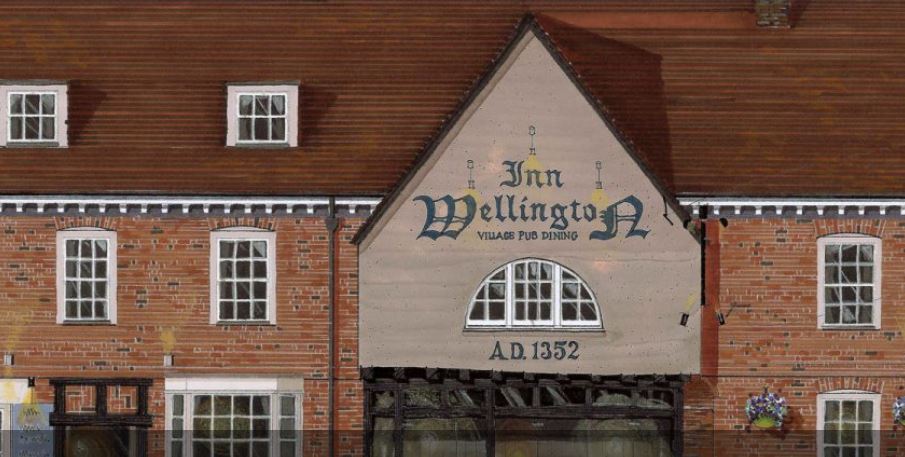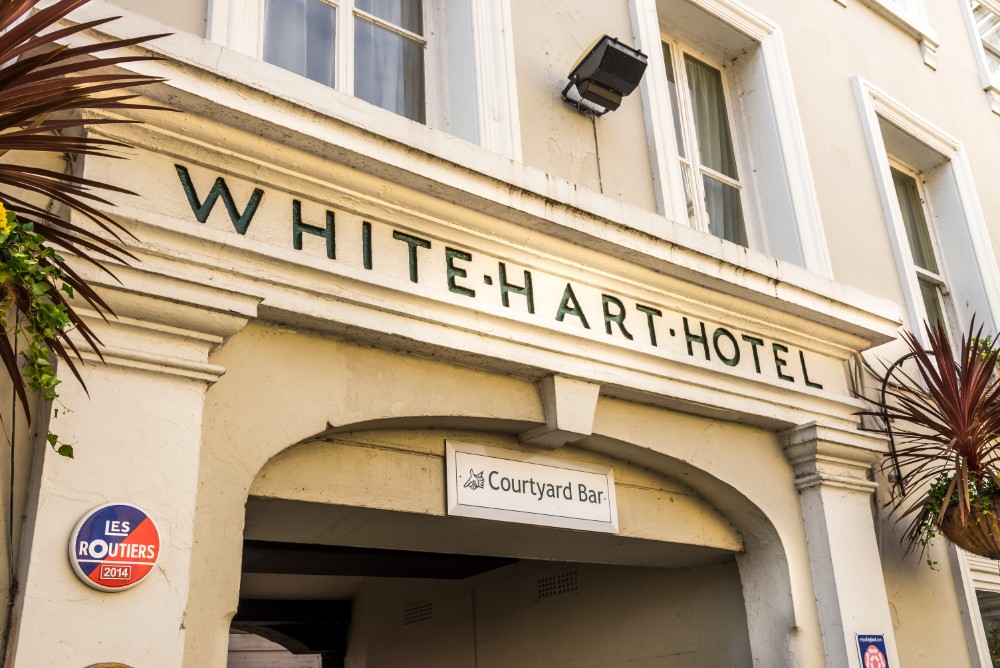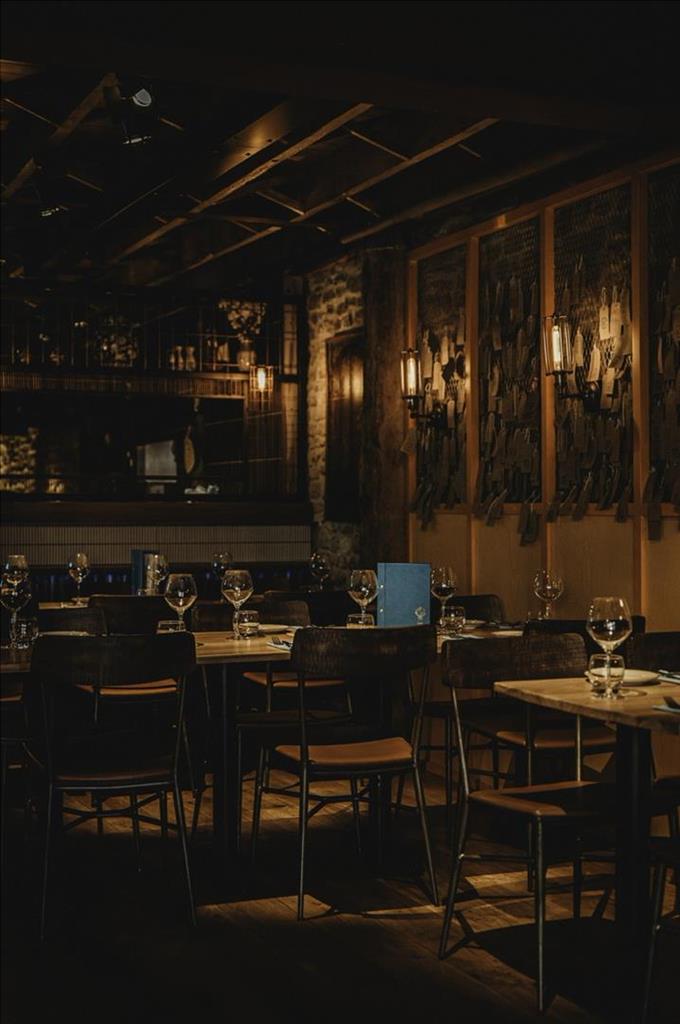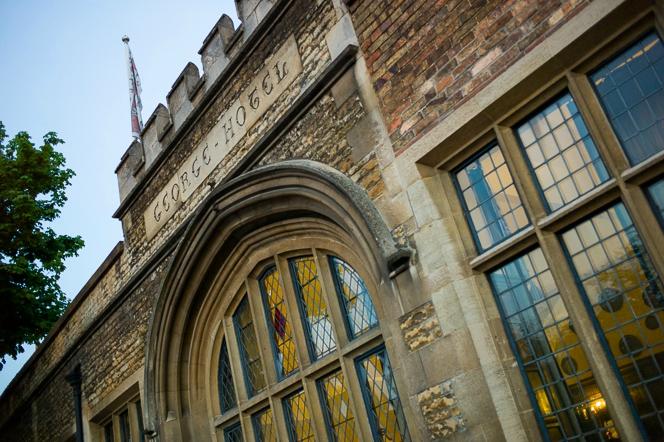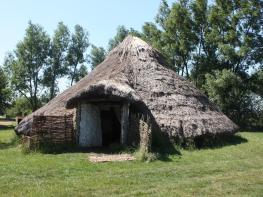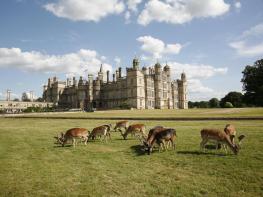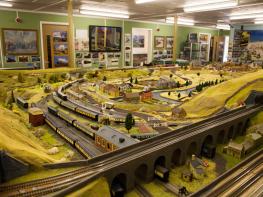A delightful Victorian house, Woodlands Hotel is ideally situated just a short walk from the…
Around Pinchbeck

A relocated village and an undermined medieval church
8 miles (12.9kms)
About the walk
As you walk along the riverside path opposite the linear village of Surfleet, strung out beside the River Glen and surrounded by open arable fields, it’s hard to believe that the small community once stood on the seashore. The Domesday Book records that Surfleet had two saltpans, where salt was obtained by evaporating salt water, confirming that Surfleet was almost certainly once a coastal village. Today the saltmarsh and mudflats of the Wash are 12 miles (19.4km) away, the distance explained by successive drainage schemes which have seen land reclaimed from the sea for agriculture.
Draining the low-lying coastal marshes began as far back as Anglo Saxon times, but took off in earnest with the advent of mechanical pumps and steam engines, such as the preserved Pinchbeck Engine (see While You’re There), which lifted an incredible 3 million tons of water from the land at a rate of 7,500 gallons (34,095 litres) per minute.
The walk follows embankments built to stop the valuable farmland from being flooded, while historic old sea banks can still be made out in some of the fields at Seas End. This part of the river is known as Reservoir and has been popular with weekend holidaymakers since the 1920s, and a modest stretch of holiday cabins and chalets has developed along the river here. The sluice was built in 1739 ‘by order of the Honourable Adventurers of Deeping Fen’ to maintain the levels in the River Glen, which issues out in to the larger River Welland a short distance downstream.
The sinking church
When you reach Surfleet Bridge take a few moments to look across to the medieval Church of St Laurence. Not long after the church was built it began sinking in the soft soil and the tip of the spire is now 6ft 4.5in (1.9m) out of perpendicular. A cross on the floor of the tower near the door indicates the point exactly below the tip of the spire. A local legend says that the tower leans after bowing to a passing knight!
Tulips from… Spalding
On the road between Pinchbeck and Surfleet, at Crossgate, is Spalding Flower Bulb Museum. It’s open daily between April and October and tells the story of Lincolnshire’s flower bulb industry that was centred on this district called South Holland. For 120 years, it has been a vital part of the local economy and the collection includes equipment and machinery used in the production of bulbs, including a flower forcing glasshouse built in 1904. Although the flower industry has declined in recent years it’s still celebrated locally with the annual Tulip Parade that takes place in Spalding on the first Saturday in May.
Walk directions
On Knight Street, in Pinchbeck village centre, take an alleyway called Gallery Walk just along from the Spar shop. Go through the staggered metal barriers and follow it to cross the junction of Brownlow Crescent and Bear Lane and continue out beside fields and a ditch. At the lane at the end go left, then in a few paces right, to resume the route between more houses.
At the end of Gallery Walk turn right on to a lane, then branch left on to Bacons Lane (which becomes Cuckoo Lane). Follow this quiet thoroughfare across the fields all the way to the main road on the edge of Surfleet.
Turn left and walk along the pavement to Surfleet Bridge. Don’t cross the bridge but cross the road instead for a narrow, signposted public footpath between houses and the River Glen. It leads along the end of an open back garden and then out along field-edges above the river. Beyond a slipway the route goes under the A16 bridge and continues along the riverbank past a golf course. Heed the warning about wayward golf balls. At the end go over a small concrete bridge and continue along a wide track to reach the sluice gate on the left.
This part of the river is known as Reservoir because it has been significantly widened into more of a basin. Here you can extend the walk by crossing over and turning right on the embankment path out to the confluence of the rivers Glen and Welland. To return to Surfleet Bridge either cross the sluice and turn left at the end of the lane for a pavement route via Surfleet Seas End, under the A16 and back through the houses of Surfleet, or simply retrace your steps via the riverbank fields and golf course.
At Surfleet Bridge spend a few moments to inspect the sinking Church of St Laurence, with its alarmingly tilted tower and spire, then take a footpath signposted ‘Pinchbeck Station’ on the riverside opposite The Mermaid Inn. Walk upstream on the waterside path, cross over the road (but not the bridge) at Crossgate and continue beside the river, making for the unmissable, huge water tower ahead.
Pass the riverside of the water tower, cross the railway line with care, and finally emerge on the road by The Ship pub (closed at the time of writing). Cross over to the pavement and turn left to follow this across the bridge over the railway and back into the centre of Pinchbeck.
Additional information
Riverside paths, tracks and pavements
Fens and riverside plain
Some good sections, but on lead on streets and across golf course
OS Explorer 249 Spalding & Holbeach
Kerbside on Knight Street, Pinchbeck
None on route (nearest in Spalding)
WALKING IN SAFETY
Read our tips to look after yourself and the environment when following this walk.
Find out more
Also in the area
About the area
Discover Lincolnshire
Much of the fenland around the Wash has been drained of its marshes and reclaimed as highly productive farmland. Further north, the coastline, with its sandy beaches, has been developed to accommodate the holiday industry, with caravans, campsites and the usual seaside paraphernalia. The main resorts are Skegness, Mablethorpe, Cleethorpes and Ingoldmells. Inland, the chalky margin of the Lincolnshire Wolds offers an undulating landscape of hills and valleys, designated as an Area of Outstanding Natural Beauty.
Lincoln, the county town, is dominated by its magnificent cathedral. Most of interest in the city is in the uphill area, Steep Hill, ascending from the River Witham; the Bailgate spanned by the Newport Arch, and the Minster Yard with its medieval and Georgian architecture. Boston, on the banks of Witham, was England’s second biggest seaport in the 13th and 14th centuries, when the wool trade was at its height. There are market towns all over the county still holding weekly markets, including Barton-upon-Humber, Boston, Bourne, Brigg, Crowland, Gainsborough, Grantham, Great Grimsby, Holbeach, Horncastle, Long Sutton, Louth, Market Rasen, Scunthorpe, Sleaford, Spalding (the centre of the flower industry), and the elegant Edwardian spa resort of Woodhall Spa.
Nearby stays
Restaurants and Pubs
Nearby experiences
Recommended things to do
Why choose Rated Trips?
Your trusted guide to rated places across the UK
The best coverage
Discover more than 15,000 professionally rated places to stay, eat and visit from across the UK and Ireland.
Quality assured
Choose a place to stay safe in the knowledge that it has been expertly assessed by trained assessors.
Plan your next trip
Search by location or the type of place you're visiting to find your next ideal holiday experience.
Travel inspiration
Read our articles, city guides and recommended things to do for inspiration. We're here to help you explore the UK.

